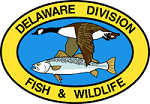Search Level: Standard
Search Term(s): Euthamia caroliniana (1 record found)
Search Term(s): Euthamia caroliniana (1 record found)
ASTERACEAE
Aster Family
Aster Family
Euthamia caroliniana (Carolina flat-top goldenrod)
[ + ]
Synonym
Euthamia tenuifolia (Pursh) Nutt. var. tenuifolia;E. tenuifolia (Pursh) Nutt. var. microcephala Greene
Carex Section
--
Meaning of Scientific Name
Euthamia: from the Greek meaning "well-crowded", referring to the clustered flowers; caroliniana: of or from Carolina (U.S.)
Native Plant
Yes
Life Form
Perennial Herb
Phenology (Flowering Period)
September
Physiographic Province
☐ Piedmont
☑ Coastal Plain
County Distribution
☑ New Castle
☑ Kent
☑ Sussex
Habitat
Moist swales, wet meadows, inner-dune swales and acidic fens
State Status
Common
Piedmont Status
--
Coastal Plain Status
Common
Global Rank
--
Federal Status
--
Geographic Affinity
--
Species at Limit of Distribution
☐ Northern
☐ Southern
North American Distribution (Non-indigenous Species)
--
Coefficient of Conservatism
6
Invasive
--
Invasive Watchlist
--
Global Origin (Non-native Species)
--
Wildlife Values
Flowers attract a variety of insects.
Wetland Indicator Status
FAC
Medicinal Properties
Part used: Flowering herb. Internally used as tea or tincture for cystitis, gastrointestinal tract and upper respiratory infections, and as an anti-inflammatory for gout and gouty arthritis. Topically used as a wash for minor wounds and a mouthwash/gargle for thrush, sore throats, and periodontal disease.
ID Notes
--
Additional Info
There is a great deal of phenotypic variation within the genus Euthamia and morphological differences could be related to environmental factors. The "southern form" [syn. = E. tenuifolia var. microcephala (fewer florets per head and narrower, widely spreading leaves)] is easily recognizable and appears to be somewhat uncommon, being found in inner-dune swales, Coastal Plain seasonal ponds, power-line bogs and acidic fens in Sussex County and further south on the Delmarva. The typical E. caroliniana (syn. = E. tenuifolia) appears to be more of a generalist, occurring in moist swales and wet meadows.
Habitats in which this plant occurs
Beach and Dune Habitats (Interdunal Wetlands, herbaceous, shrub, forested)Peat Wetlands (Acidic Fens)
Photos
[show|hide]
(click on thumbnail for larger view)


